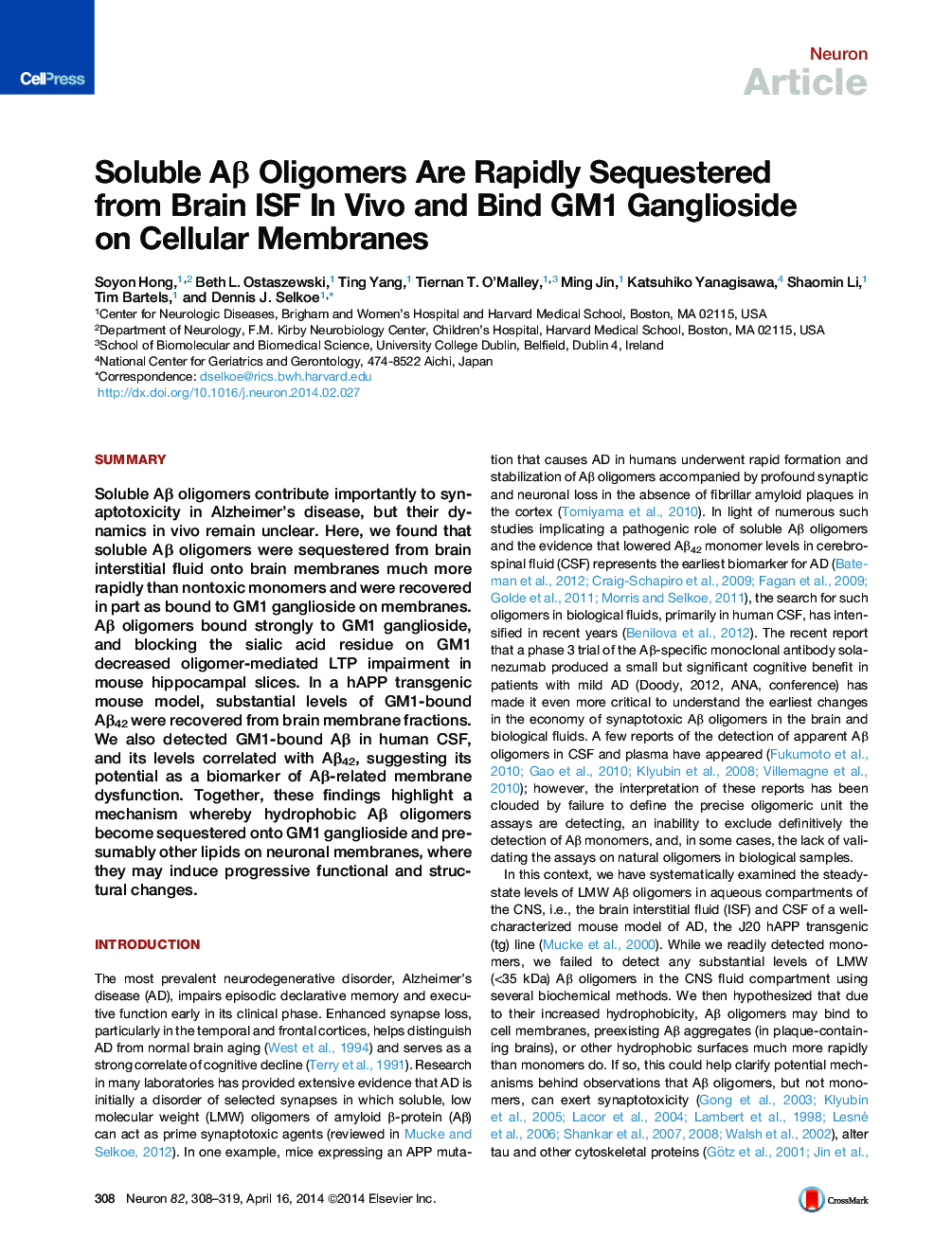| Article ID | Journal | Published Year | Pages | File Type |
|---|---|---|---|---|
| 4321131 | Neuron | 2014 | 12 Pages |
•Aβ oligomers are rapidly sequestered away from hippocampal ISF in vivo•Aβ oligomers bind to GM1 on neuronal membranes (oligomer > monomer; Aβ42 > Aβ40)•Blocking the GM1 sialic acid moiety decreases Aβ oligomer-mediated LTP inhibition•GM1-bound Aβ can be recovered in human CSF and correlates with CSF Aβ42 levels
SummarySoluble Aβ oligomers contribute importantly to synaptotoxicity in Alzheimer’s disease, but their dynamics in vivo remain unclear. Here, we found that soluble Aβ oligomers were sequestered from brain interstitial fluid onto brain membranes much more rapidly than nontoxic monomers and were recovered in part as bound to GM1 ganglioside on membranes. Aβ oligomers bound strongly to GM1 ganglioside, and blocking the sialic acid residue on GM1 decreased oligomer-mediated LTP impairment in mouse hippocampal slices. In a hAPP transgenic mouse model, substantial levels of GM1-bound Aβ42 were recovered from brain membrane fractions. We also detected GM1-bound Aβ in human CSF, and its levels correlated with Aβ42, suggesting its potential as a biomarker of Aβ-related membrane dysfunction. Together, these findings highlight a mechanism whereby hydrophobic Aβ oligomers become sequestered onto GM1 ganglioside and presumably other lipids on neuronal membranes, where they may induce progressive functional and structural changes.
